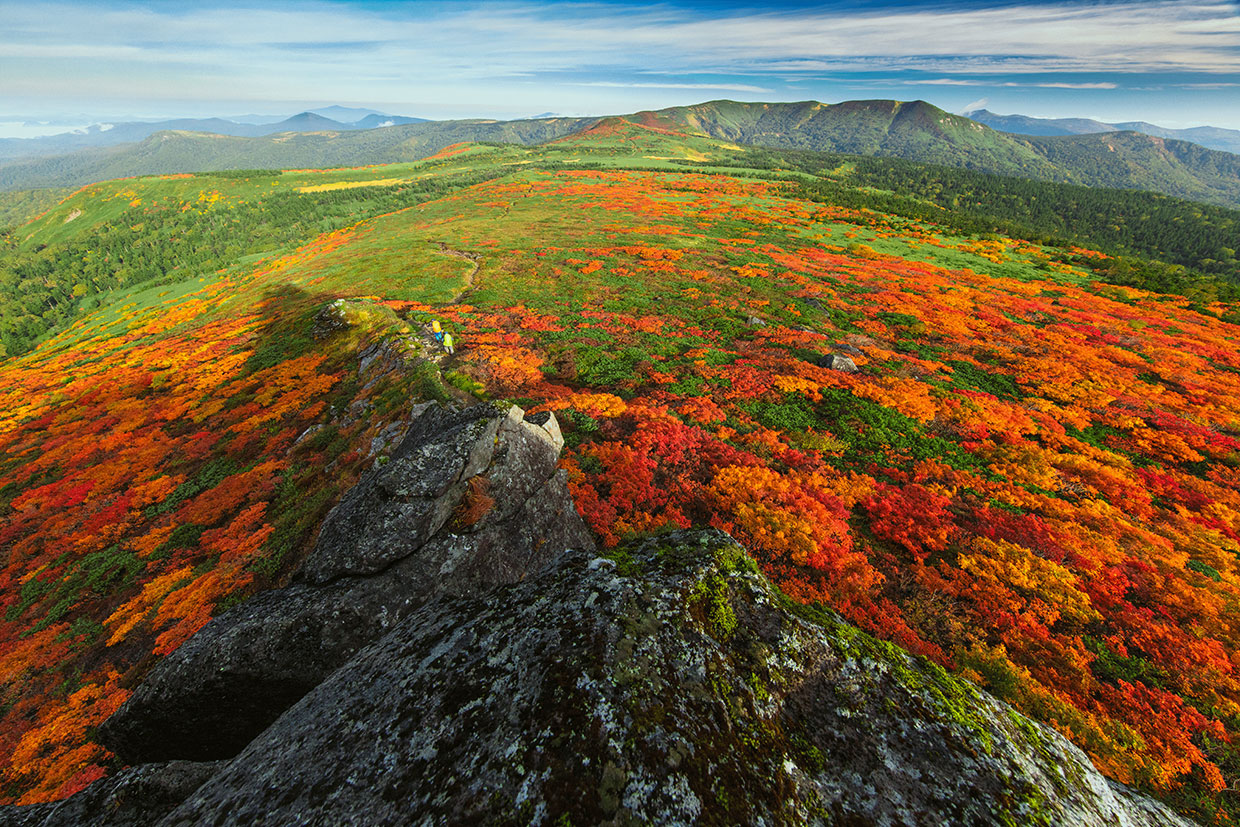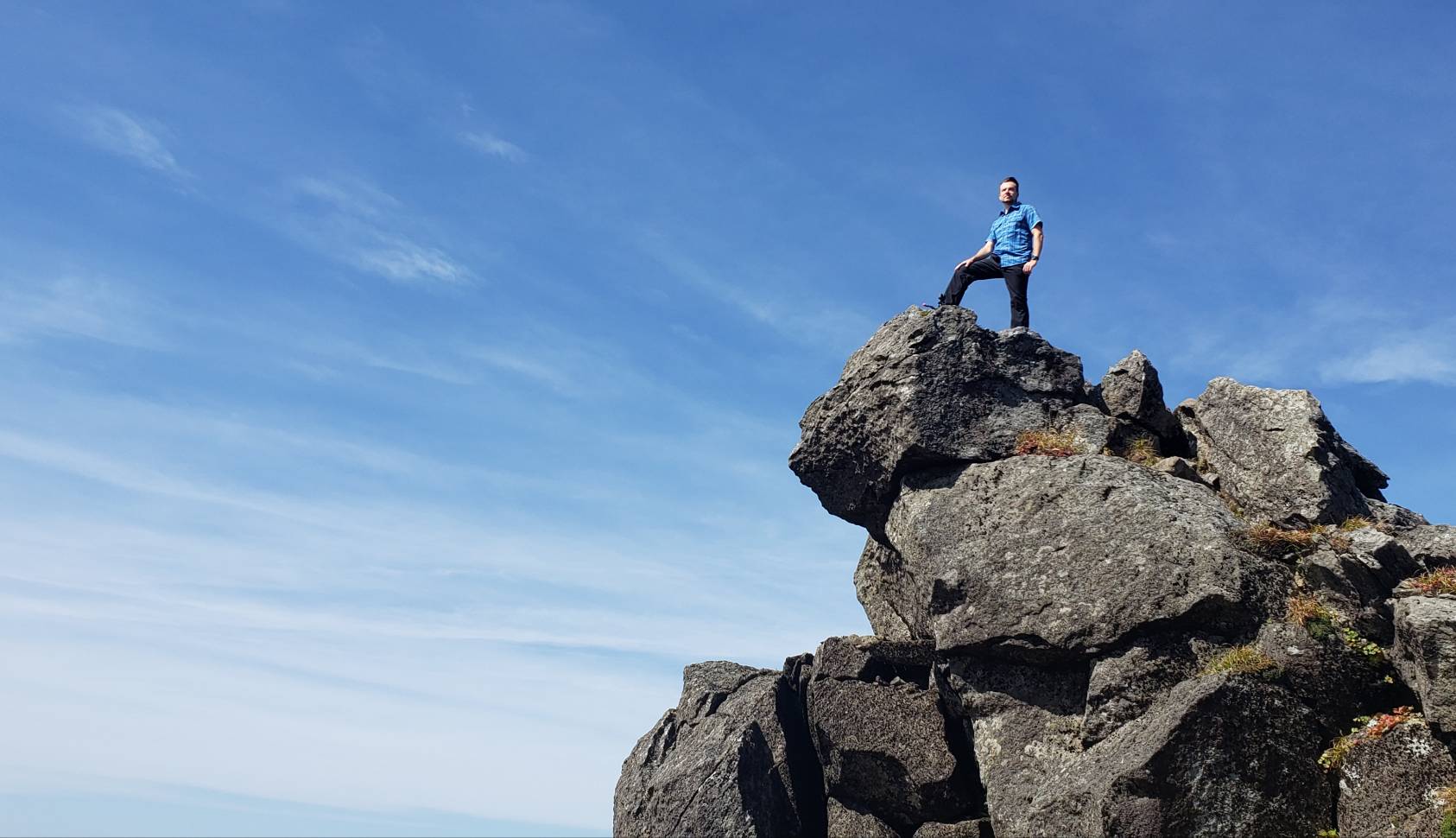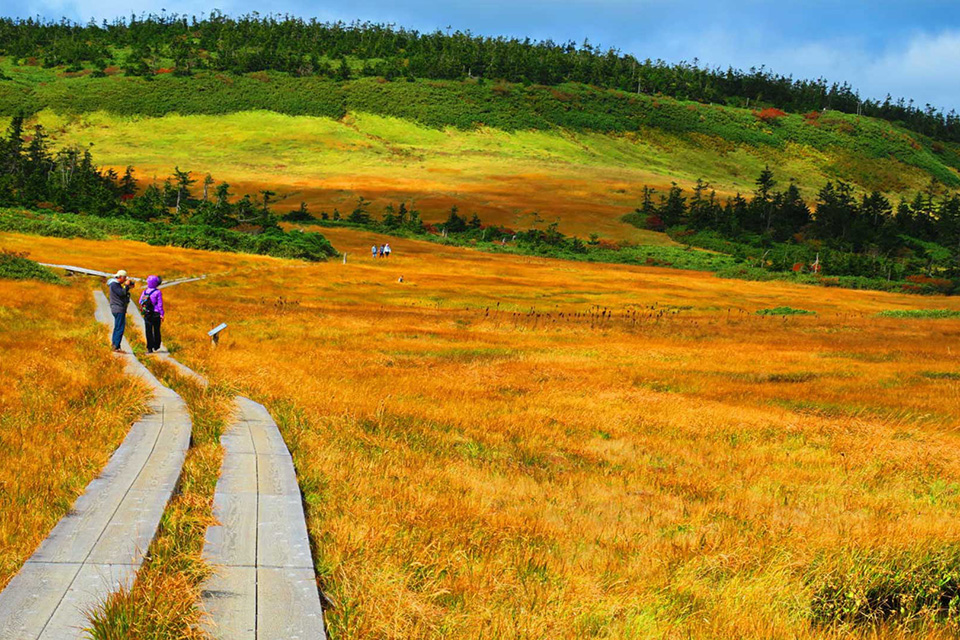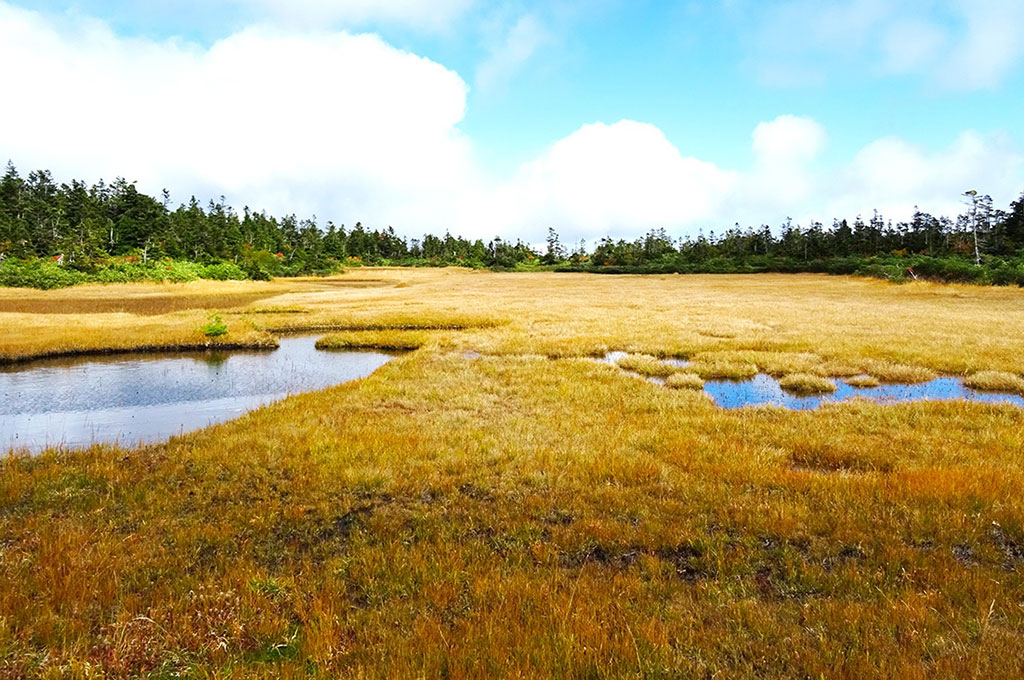The earliest autumn in Honshu
Home " Tourist Information " Why Hachimantai? Beauty and Adventure All Year Round in the Towada-Hachimantai National Park! " The earliest autumn in Honshu
The mountains of Hachimantai are decorated with fiery autumn leaves, marking the beginning of autumn in Japan.
Hachimantai City is located in the center of the northern Tohoku region of Japan.
Nationwide, autumn foliage usually begins in October or November, but in Hachimantai it starts around mid-September, making it the earliest in Honshu.
Hachimantai is the first place where the autumn leaves begin to change color.
Here are some beautiful autumn views starting with the mountain ridges.
Mt. Mitsuishi Summit
Autumn leaves cover the mountains like a carpet.
The path to the top is decorated with colored kobushi (Japanese pepper) and yamaboshi (Japanese pepper) plants, and the cool morning and evening temperatures make the autumn leaves even more vivid.
The climax of the fall foliage awaits at the summit of Mitsuishiyama. The 360-degree panoramic view from the lava outcropping is tinged with fiery reds, oranges, and scarlets, like a beautiful carpet woven by Mother Nature.

View from Mt. Mitsuishi (elevation 1,466m)
The 360-degree panoramic view offers a panoramic view of the mountains of Towada-Hachimantai National Park. During the fall foliage season, all the mountains turn red, orange, and gold, creating a spectacular view.
A traverse hike from Mitsuishiyama to Obukadake (大深か岳) and Mokkodake (畚け岳) is also highly recommended. This route is loved by many hikers every year, as they can enjoy different views at each summit while walking through the mountains in the autumn colors.

The best time to view the autumn leaves at Mitsuishiyama is in mid-September!
The trailhead near Matsukawa Onsen Hot Springs provides access to the summit area pictured. The trail is a bit steep at first, but after about 20 minutes of climbing, the path becomes gentler and the walk to the lodge beyond is relatively easy.
Mitsuishi Villa has toilets and is an ideal spot for lunch or a rest. From there, it is a short climb of about 1 km to the top of Mt.
If one were to make the round trip from Matsukawa Onsen to the summit and back, the descent would take about two hours and the return trip would be relatively quick.

For hikers who are up for the challenge, we recommend the 15-kilometer long route known as the "Ura-Iwate Traverse Route" beyond the summit. This route takes hikers to the summits of Mt. The entire course takes 6 to 8 hours depending on your pace, so please plan your climb well in advance.
During the fall foliage season, this area gets very crowded, so if you are visiting by car, we recommend leaving early in the morning to secure a parking space. The spectacular view is well worth it!
Hachimantai Nature Trail
Near the summit of Hachimantai, in the Hachimantai summit area where the Hachimantai Aspite Line and the Hachimantai Jukai Line converge, there is a popular trail that circles Hachimanuma and Kagami-numa, passing through beautiful alpine wetlands. The trail is very well maintained, and wooden boardwalks have been installed in the marshland to allow visitors to enjoy a pleasant stroll.
Maps and information about local flora and fauna are posted along the trail, allowing visitors to learn about nature as they walk. There is also a "Lingunso" lodge with restrooms along the way, so you can enjoy hiking in peace.
This trekking course, which takes in some amazingly spectacular scenery, has two circuit courses, one long and one short, that can be chosen according to distance and time required. Please note, however, that it is accessible only from mid-April to November, when the Hachimantai Aspite Line is open.

Travel Time 55min, approx. 2.4km total
Prefectural Border Trailhead→15min, approx.0.5㎞→Mt. Hachimantai Summit→10min, approx.0.4㎞→Hachiman-numa – Gama-numa Observatory→10min, approx.0.4㎞→Ryounso→5min, approx.0.3㎞→Genta-Wakare→10min, approx.0.5㎞→Gentamori→10min, approx.0.5㎞→Genta-Wakare→25min, approx.1.1㎞→Mikaeri Ridge→10min, approx.0.5㎞→Prefectural Border Trailhead
Travel Time 1hr 50min, approx. 4.9km
The Kuroyachi Wetlands

Kuroyachi Marsh, located halfway between Chausudake and Gentamori, is a natural meadow rich in flowers and plants. In spring, Mizubashou (Asian skunk-cabbage) blooms, and in summer, Nikkoukisuge, Kan'aoi (mallow), and Watasuge (cotton grass) color the marshland.
In autumn, the entire marshland turns golden, with beautiful grass maple leaves.
Kuroyachi Marsh can be accessed directly from the Hachimantai Nature Trail at the top of Hachimantai Mountain via Gentamori, a 2-hour one-way trekking course, or from the Kuroyachi Parking Lot by the Kuroyachi Bus Stop on the Hachimantai Aspite Line.
Kuroyachi-Iriguchi→15min, approx.0.5㎞→Kuroyachi Wetlands→40min, approx.1.5㎞→Gentamori→10min, approx.0.5㎞→Genta-Wakare→15min, approx.0.5㎞→Ryounso→5min, approx.0.3㎞→Hachiman-numa – Gama-numa Observatory→10min, approx.0.4㎞→Mt. Hachimantai Summit→25min, approx.1.1㎞→Prefectural Border Trailhead
Travel Time 1hr 45min, approx. 4.3km
Chausu-Guchi→40min, approx.1.2㎞→Chausu-Sanso→5min, approx.0.2㎞→Mt. Chausu Observatory→5min, approx.0.2㎞→Chausu-Sanso→25min, approx.1.3㎞→Kuroyachi Wetlands→40min, approx.1.5㎞→Gentamori→10min, approx.0.5㎞→Genta-Wakare→15min, approx.0.5㎞→Ryounso→5min, approx.0.3㎞→Hachiman-numa – Gama-numa Observatory→10min, approx.0.4㎞→Mt. Hachimantai Summit→25min, approx.1.1㎞→Prefectural Border Trailhead
Travel Time 3hrs, approx. 7.2km

